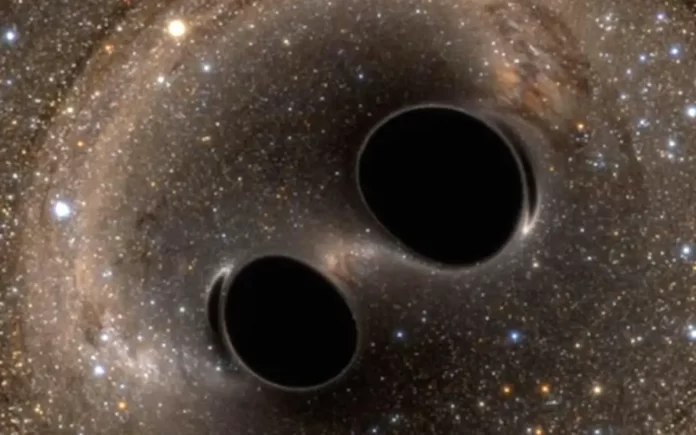New York: In a groundbreaking discovery, scientists have identified the heaviest known black hole to date. Utilizing the advanced capabilities of the Gemini North Telescope, astronomers have precisely measured the mass of a pair of supermassive black holes, asserting their status as the most massive black hole pairing ever documented.
This remarkable finding sheds light on a crucial aspect of black hole dynamics: their immense weight significantly impacts the possibility of mergers. Within the elliptical galaxy B2 0402+379, astronomers have pinpointed twin supermassive black holes whose combined mass equals a staggering 28 billion suns. Martin Still, the NSF program director of the International Gemini Observatory, expressed optimism about the implications of this discovery for future research endeavors.
The formation of a binary system occurs when two galaxies merge, leading to the convergence of their respective black holes. In theory, these black holes should eventually collide. However, despite evidence of black holes approaching each other within a mere 24 light-years, such mergers have not been observed.
The absence of observed mergers raises intriguing questions about the feasibility of such events. Astronomers have long debated this phenomenon, with prevailing theories suggesting that these massive systems absorb surrounding stellar matter necessary for mergers. The discovery of the Dwij black hole appears to support this theory.
Researchers hypothesize that an extensive population of stars is required to slow down Dwij’s orbit, allowing the black holes to approach closely. However, as both black holes absorb surrounding stars and gas, no stellar matter remains near the galactic center, halting the merger process. Whether these black holes can overcome this obstacle and eventually merge remains a tantalizing mystery for scientists.
B2 0402+379 is currently recognized as a fossil group by scientists, who are actively studying each component of this unique system to unravel its complexities.



